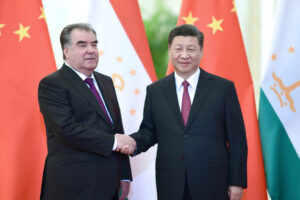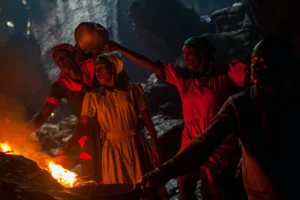The Geological Agency of the Ministry of Energy and Mineral Resources (ESDM) revealed the criteria for groundwater users who must obtain government permits.
This is as stated in the Decree of the Minister of Energy and Mineral Resources (Kepmen) No. 291/2023 concerning Standards for Implementing Groundwater Use Approvals.
Plt. Head of the Geological Agency of the Ministry of Energy and Mineral Resources, Muhammad Wafid, said that parties who need a groundwater drilling permit are people who fulfill their basic daily needs by using groundwater of more than 100 m3 per month per head of family or per group.
“What requires approval for Ministerial Decree 291 is the fulfillment of basic daily needs if groundwater use is more than 100 m3 per month per head of family. Second, group use with use of more than 100 m3 per month per group,” explained Wafid at the event. press conference at the Ministry of Energy and Mineral Resources Building, Jakarta, Monday (13/11/2023).
Meanwhile, permits are also required for people’s agriculture outside the existing irrigation system and using groundwater.
Apart from that, continued Wafid, water sports tourism for the public interest as well as the use of groundwater for research and development, education and/or government-owned health also requires approval for groundwater use.
Then, he gave an example of communities that require permission to use groundwater, such as housing for people with middle to upper economic levels who use groundwater of more than 100 m3 per month.
“If we compare the housing of rich people who have swimming pools, the water change in the pool may be more than 100 m3. Therefore, rich people who have pools must have approval, that is our target,” he explained.
Wafid said that efforts to control groundwater must be carried out, so as to enable the process of restoring groundwater levels and slowing down the rate of land subsidence.
He gave an example, in the Jakarta Groundwater Basin, efforts have been made to monitor groundwater and land subsidence since 2014 through the establishment of the Groundwater Conservation Center (BKAT), which is a UPT under the Center for Groundwater and Environmental Geology, Geological Agency, Ministry of Energy and Mineral Resources.
Groundwater monitoring is carried out at 220 locations every year, both in monitoring wells, production wells and dug wells, in the form of measuring groundwater levels and analyzing the physico-chemical properties of groundwater.
Wafid said that measurements during the 2015-2022 period in the Jakarta Groundwater Basin area showed a rate of land subsidence of between 0.04 to 6.30 cm per year.
This shows that there is a slowing of land subsidence compared to 1997 to 2005 where the rate of land subsidence was between 1-10 cm per year to 15-20 cm per year.
Source: CNBC















